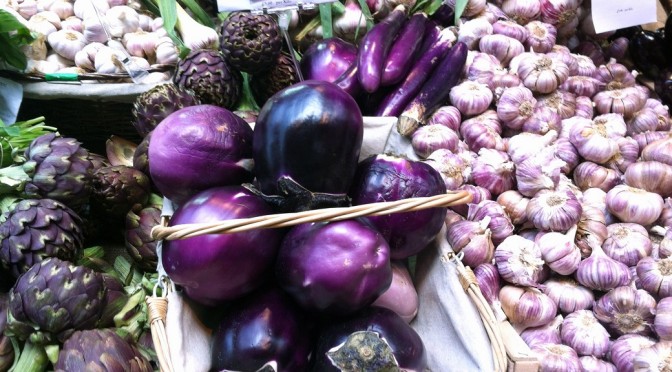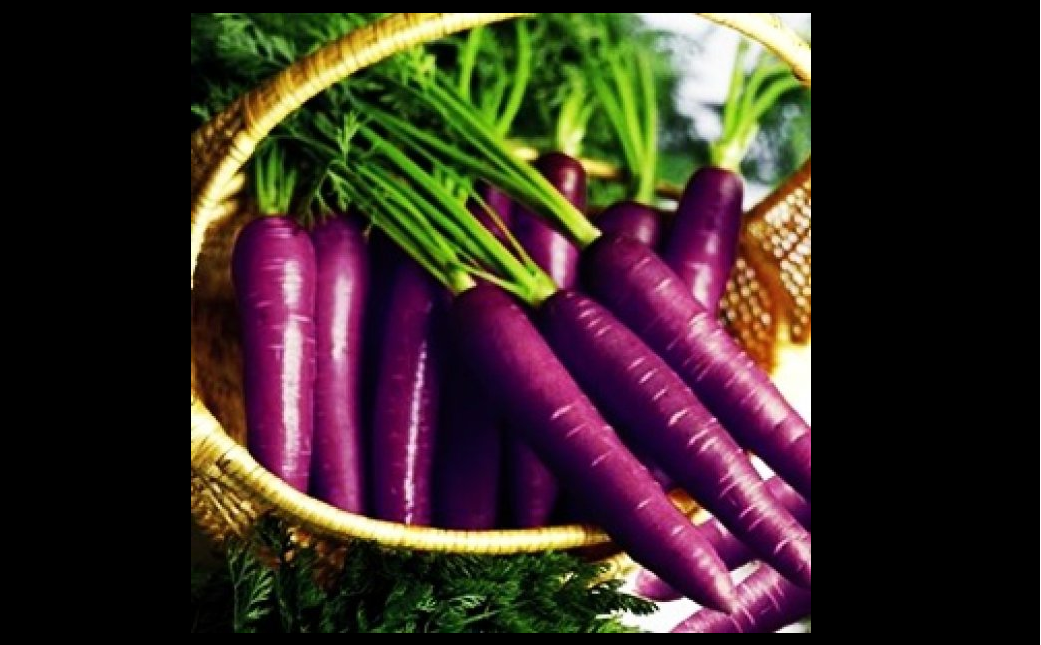From Mrs. Cog's Corner
You may be paying attention to your diet in terms of what you eat and where it came from, but have you thought to consider the color of the fresh food you consume? Often its color can give you clues to its nutritional and natural medicinal qualities. It seems with all its benefits there are good reasons for purple produce to be all the rage.
When nature colors her food purple it indicates anthocyanin, a powerful anti-oxidant, is within. This substance has been shown in studies to be a powerful cancer preventative and an anti-inflammatory, plus it helps regulate healthy insulin levels.
There are abundant sources of purple foods. Some vegetables include beets, purple onions, purple asparagus, purple carrots, purple corn , purple cabbage, eggplant, and purple potatoes. There are purple lettuces, kale, radishes, peppers and olives as well. Other purple fruits include grapes, blackberries, plums, passion fruit, raisins, prunes and figs. Blueberries and pomegranates are often included as purple fruits because they contain the same flavonoids and qualities. In addition, there are purple culinary herbs such as purple basil and purple sage.
At one time, the "normal" color of carrots was purple. Supposedly the mutant orange carrots were cultivated and became popular in honor of the Dutch House of Orange during the late 1500s. This past summer I hunted high and low for purple carrot seeds but with no luck. Too bad that fad didn’t blow over like the whole tulip situation lol.
It may be well worth your time to check into adding more purple to your diet and perhaps your garden as well. Smoothies, snacks, salads and side dishes, the possibilities are endless. Below are recipe links and additional information to go purple.
Great article and recipes for purple potato soup and other purple dishes.
Suggesting purple food’s anthocyanin and many other natural benefits are being deliberately bred out of our food. http://www.nytimes.com/2013/05/26/opinion/sunday/breeding-the-nutrition-out-of-our-food.html?pagewanted=all
Once upon a time all carrots were purple… http://www.todayifoundout.com/index.php/2010/04/carrots-used-to-be-purple-before-the-17th-century/
As I flipped through the May issue of the Consumer Reports onHealth newsletter, the headline "Pick purple produce" in the "quick tips" column caught my eye. The newsletter notes that purple fruits and vegetables such as blueberries and eggplant, are loaded with the antioxidant anthocyanin and other disease-fighting substances that may help fight heart disease, diabetes, and some cancers. Blueberries and other blue/purple berries were also on our list of foods to eat for longevity. http://www.epicurious.com/articlesguides/blogs/editor/2013/05/the-power-of-purple-food.html
“If I could only eat one color per day, it would be purple,” said James Joseph, a neuroscientist at the USDA Human Nutrition Research Center on Aging at Tufts University and co-author of “The Color Code: A Revolutionary Eating Plan for Optimum Health.” “There is more data on purple than any other color right now.” http://www.columbiatribune.com/arts_life/food/chefs-and-scientists-praise-the-hidden-health-benefits-of-purple/article_ec56b04b-1ee0-54d1-aea9-03c2b26f59a6.html
The U.S. Department of Agriculture recommends eating at least five to nine servings per day of fruits and vegetables. However, the amount of vegetables you eat isn't the only thing you need to take into consideration. You also need to attempt to consume fruits and vegetables in a variety of different colors. This is because the different colors of fruits and vegetables indicate the different nutrients they contain. Consuming a rainbow of fruits and vegetables helps insure you get enough of the different nutrients you need for good health. http://healthyeating.sfgate.com/colors-fruits-vegetables-play-important-role-1660.html
The hue of purple represents luxury, sophistication and royalty. When it comes to your well-being, the regal color also represents a wide variety of health-promoting properties. If you are looking to improve certain aspects of your health, look great or simply relax, the power of purple can help you achieve your goals. Here are some ways to incorporate more nutritionally-potent purple into your diet. http://www.sheknows.com/health-and-wellness/articles/805508/the-nutritional-power-of-purple-foods
Purple foods contain anthocyanins, which are health-promoting chemicals that help protect cells and heal your body. Research suggests they play active roles in promoting eye and heart health, decreasing cancer cell proliferation and more. Anthocyanins are predominant in teas, honey, wines, fruits, vegetables, nuts, olive oil, cocoa and cereals. http://www.doctoroz.com/article/power-purple-foods
These purple antioxidants, called anthocyanins, have been shown to protect the heart and vision, promote mental focus, and prevent oxidative stress. Resveratrol is another fat-soluble compound found in some purple foods, such as grapes, red wine, purple grape juice, peanuts, and some berries. Research has indicated that purple foods may provide a cure for cancer. http://www.naturalnews.com/027477_berries_health_foods.html

